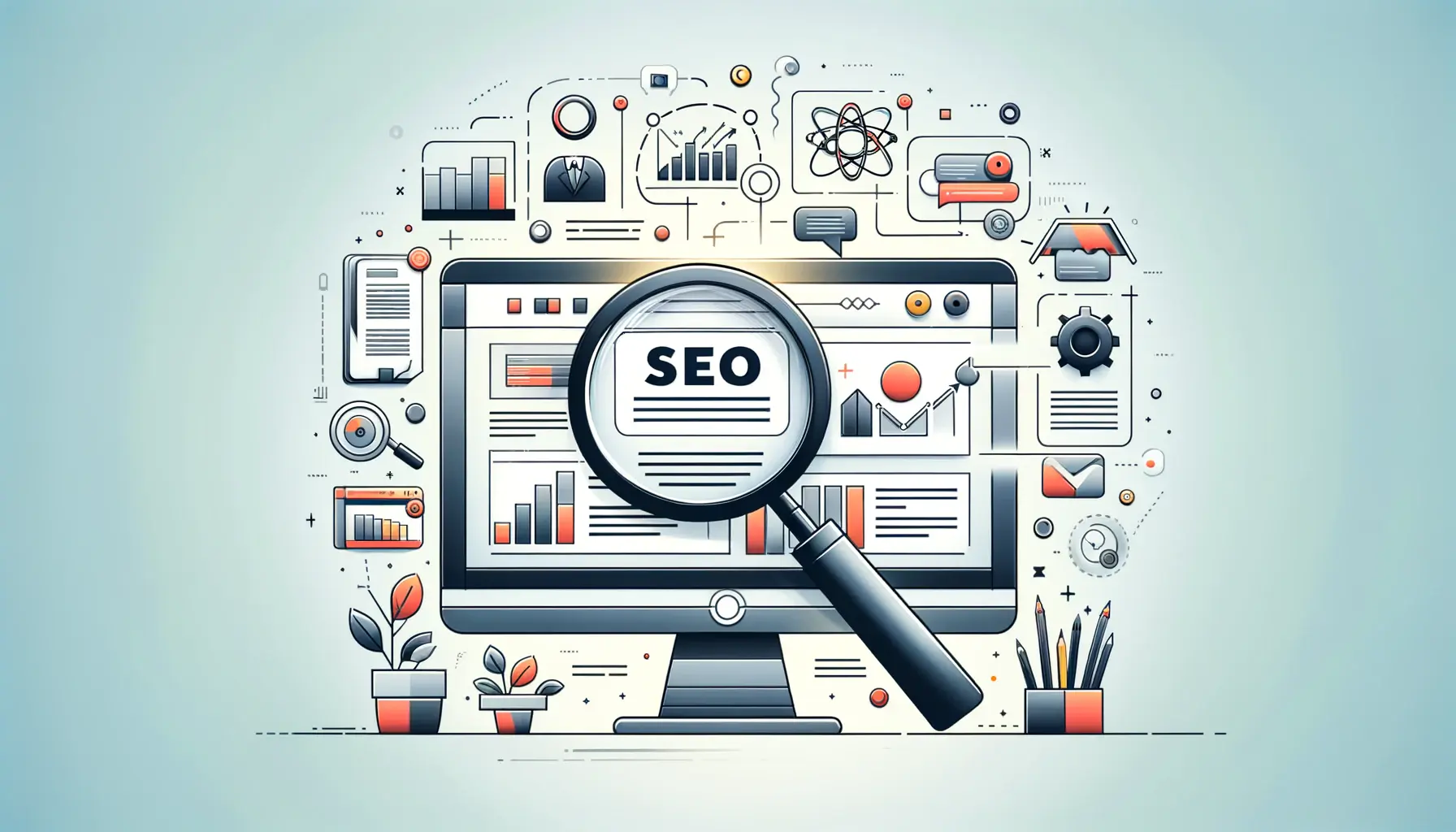The landscape of Search Engine Optimization (SEO) is perpetually evolving, with each year bringing its own set of challenges and opportunities, especially for Software as a Service (SaaS) companies.
As we step into 2024, the importance of a robust, world-class SEO strategy for SaaS businesses cannot be overstated.
The digital space is increasingly crowded, and standing out requires not just visibility, but strategic visibility.
This guide aims to dissect the components of an effective SEO strategy tailored for SaaS companies, ensuring they can not only compete but excel in their digital marketing efforts.
SEO for SaaS is unique.
Unlike traditional businesses, SaaS companies operate on a model that relies heavily on online visibility to drive subscriptions and recurring revenue.
This makes SEO not just a marketing strategy but a fundamental component of their business model.
A world-class SEO strategy for SaaS in 2024 must be adaptive, data-driven, and customer-centric, focusing on delivering value at every touchpoint of the customer journey.
It’s about understanding the nuances of your audience, the specificity of your niche, and leveraging the latest SEO techniques to drive growth and retention.
- Understanding SEO for SaaS in 2024
- Building a Foundation with Technical SEO
- Content Strategy: The Core of SaaS SEO
- Link Building Strategies for SaaS
- User Experience and SEO Integration
- Local SEO for Global SaaS Expansion
- Analytics and Reporting for SEO Optimization
- Mastering SEO for SaaS: A Strategic Blueprint for 2024
- SEO Strategy for SaaS in 2024: FAQs
Understanding SEO for SaaS in 2024
The Evolution of SEO in the SaaS Industry
The SaaS industry has witnessed a significant transformation in how SEO strategies are conceptualized and implemented.
Gone are the days when keyword stuffing and backlink farming could guarantee you a spot on the first page of Google.
In 2024, the algorithm has become more sophisticated, prioritizing user experience, content relevance, and the overall value a website provides.
For SaaS companies, this means adopting a holistic approach that encompasses technical SEO, content marketing, and user engagement metrics to improve search rankings.
Moreover, the rise of artificial intelligence and machine learning in search algorithms has introduced a new layer of complexity.
These technologies allow search engines to understand user intent more accurately, making it imperative for SaaS companies to align their content strategy with the needs and questions of their target audience.
This alignment ensures that when potential customers are searching for solutions, your SaaS platform appears as a relevant, authoritative answer to their queries.
Key Components of a Successful SaaS SEO Strategy
A successful SEO strategy for SaaS companies in 2024 hinges on several key components.
First and foremost is the importance of high-quality, informative content that addresses the specific needs of your target audience.
This content must be optimized for search engines but, more importantly, crafted to engage and convert readers into users.
Additionally, technical SEO remains a cornerstone of any effective strategy, with a focus on site speed, mobile optimization, and secure, accessible web architecture.
Another critical aspect is the strategic use of keywords.
While keyword density is a factor, the emphasis has shifted towards the relevance and context of how these keywords are used within your content.
Semantic search has become more prevalent, with search engines better understanding the context of searches.
This evolution requires SaaS companies to be more strategic in their keyword research, focusing on long-tail keywords and questions that potential customers might use to find their software solutions.
Incorporating user feedback and engagement metrics into your SEO strategy is not just beneficial; it’s essential. User behavior data can provide invaluable insights into how your content is performing, what users are searching for, and how they interact with your site. This data-driven approach allows for continuous optimization and refinement of your SEO strategy, ensuring it remains aligned with user needs and search engine algorithms.
As we navigate the complexities of SEO for SaaS in 2024, it’s clear that a dynamic, informed, and user-focused approach is key to achieving and maintaining top search engine rankings.
By understanding the evolution of SEO in the SaaS industry and focusing on the key components of a successful strategy, SaaS companies can leverage SEO to drive significant growth and establish themselves as leaders in their market.
Building a Foundation with Technical SEO
At the heart of any successful SEO strategy, especially for SaaS companies, lies a strong foundation in technical SEO.
As we move further into 2024, the technical underpinnings of your website not only influence your search engine rankings but also affect user experience, conversion rates, and ultimately, your bottom line.
Technical SEO encompasses a broad range of elements, from site structure and security to mobile responsiveness and page speed.
Let’s delve into the critical components that SaaS companies must prioritize to build a robust technical SEO foundation.
Firstly, ensuring your website is fully accessible to search engine crawlers is paramount.
This involves creating a well-structured XML sitemap and using robots.txt files effectively to guide search engines through your site.
Additionally, implementing a secure and accessible website architecture not only boosts your SEO but also builds trust with your users.
HTTPS encryption has become a standard expectation for online security, protecting your users’ information and enhancing your site’s credibility.
Key Elements of Technical SEO for SaaS
- Mobile Optimization: With the majority of internet traffic coming from mobile devices, having a mobile-friendly website is no longer optional. Google’s mobile-first indexing means your site’s mobile version is considered the primary version. Ensure your site is responsive, with fast loading times and easy navigation on smaller screens.
- Page Speed: Page speed is a critical ranking factor and a key component of user experience. Utilize tools like Google’s PageSpeed Insights to identify and rectify any issues that may be slowing down your site. This includes optimizing images, leveraging browser caching, and minimizing JavaScript and CSS.
- Structured Data: Implementing structured data through schema markup can significantly enhance your site’s visibility in search results. It helps search engines understand the context of your content, enabling rich snippets and improved search listings that can increase click-through rates.
Moreover, addressing crawl errors and broken links is essential for maintaining a healthy website.
Regular audits can help identify and fix these issues, ensuring search engines and users can access your content without any hurdles.
Additionally, optimizing your URL structure for readability and keyword relevance can further enhance your SEO efforts, making your site more navigable for both users and search engines.
Remember, technical SEO is not a one-time task but an ongoing process. As search engine algorithms evolve and new technologies emerge, staying updated and making continuous improvements to your website’s technical infrastructure is crucial for maintaining and improving your SEO rankings.
In conclusion, building a solid technical SEO foundation is indispensable for SaaS companies in 2024.
By focusing on mobile optimization, page speed, structured data, and other key technical elements, you can create a website that not only ranks well in search engines but also provides a seamless and secure experience for your users.
Content Strategy: The Core of SaaS SEO
Content is the cornerstone of any effective SEO strategy, particularly for SaaS companies looking to establish authority, engage potential customers, and drive conversions.
In 2024, a well-crafted content strategy goes beyond merely populating your website with keywords.
It involves creating valuable, relevant content that addresses the specific needs and pain points of your target audience, thereby positioning your SaaS solution as the best answer to their challenges.
Understanding your audience is the first step in developing a content strategy that resonates.
This means diving deep into customer personas, identifying their main concerns, and the types of content they consume.
With this insight, SaaS companies can tailor their content to speak directly to their audience’s needs, using the language and formats they prefer.
Essential Components of a SaaS Content Strategy
- User Intent: Aligning content with user intent is crucial. This involves creating content that not only ranks well but also fulfills the searcher’s needs. Whether they’re looking for information, a solution to a problem, or to make a purchase, your content should address these intents at different stages of the buyer’s journey.
- Content Types: Diversifying your content types can enhance engagement and reach. Blog posts, whitepapers, case studies, videos, and infographics can cater to different preferences, making your content strategy more robust and versatile.
- Quality and Relevance: High-quality, informative content that provides real value to your audience is more likely to earn shares, backlinks, and maintain high rankings. It’s not just about quantity; the relevance and usefulness of your content are what truly matter.
Keyword research plays a pivotal role in content creation, guiding SaaS companies to topics that matter most to their audience.
However, the focus should be on integrating these keywords naturally within valuable content, rather than creating content around keywords.
This approach ensures that your content is both search-engine friendly and genuinely useful to your audience.
Optimizing Content for Search and Users
Once you have created your content, optimization is key to ensuring it reaches your intended audience.
This includes using title tags and meta descriptions that accurately describe your content and entice clicks, as well as optimizing for featured snippets and other search engine results page (SERP) features.
Internal linking within your content can also boost SEO by helping search engines discover new pages and distribute page authority throughout your site.
Moreover, keeping your content updated and fresh is essential.
The SaaS industry evolves rapidly, and content that remains relevant and up-to-date is more likely to maintain its rankings over time.
Regularly revisiting and updating your content can also provide opportunities to deepen its value, adding the latest insights, trends, and data that can further engage your audience.
A dynamic and thoughtful content strategy is the lifeblood of SaaS SEO success. By focusing on the needs and intents of your audience, diversifying your content types, and ensuring ongoing optimization and freshness, SaaS companies can build a powerful online presence that attracts, engages, and converts their target market.
Link Building Strategies for SaaS
In the realm of SEO, link building remains a critical strategy for enhancing visibility and authority, particularly for SaaS companies aiming to stand out in a competitive digital landscape.
As we navigate through 2024, the approach to link building has evolved, focusing more on quality rather than quantity.
For SaaS businesses, this means cultivating high-quality backlinks from reputable sources that not only boost SEO performance but also drive relevant traffic to their site.
Understanding the importance of link building in the context of SEO is crucial.
Search engines view backlinks as endorsements, where each link from a reputable site signals trust and authority.
This is particularly important for SaaS companies, as their products often require a higher level of trust from potential customers.
A strategic approach to link building can significantly enhance a SaaS company’s search engine rankings and overall online presence.
Effective Link Building Techniques for SaaS
- Content Marketing: Creating valuable, shareable content is at the heart of effective link building. By producing high-quality blog posts, infographics, whitepapers, and case studies, SaaS companies can naturally attract backlinks from other websites and social media.
- Guest Blogging: Contributing guest articles to reputable industry blogs not only positions your company as a thought leader but also provides opportunities to secure valuable backlinks to your site.
- Partnerships and Collaborations: Partnering with other businesses, especially those in complementary niches, can lead to natural link exchange opportunities. These partnerships can also extend to co-hosting webinars, joint research projects, and co-authored content, all of which can generate backlinks.
While pursuing these link building strategies, it’s essential to focus on relevance and the user experience.
Links should be placed in a context that adds value for the reader, and from sites that are relevant to your SaaS product’s industry.
This not only ensures the quality of the backlinks but also aligns with Google’s guidelines, avoiding penalties associated with manipulative link building practices.
Monitoring and Analyzing Backlink Profiles
As part of a comprehensive link building strategy, regularly monitoring and analyzing your backlink profile is essential.
This involves using tools to track the backlinks your site is acquiring, assessing their quality, and identifying any potentially harmful links that could impact your SEO negatively.
By keeping a close eye on your backlink profile, SaaS companies can make informed decisions about their link building strategies and quickly address any issues that arise.
Moreover, engaging in competitor backlink analysis can provide valuable insights into the link building strategies of other players in your industry.
Understanding where your competitors are getting their backlinks from can uncover new opportunities for your own link building efforts, helping you to identify potential sites for guest blogging, partnerships, and other collaborative efforts.
A strategic, quality-focused approach to link building can significantly impact a SaaS company’s SEO success. By leveraging content marketing, guest blogging, partnerships, and continuous monitoring of backlink profiles, SaaS businesses can enhance their online authority and visibility, driving more traffic and ultimately, conversions.
User Experience and SEO Integration
The integration of user experience (UX) with SEO strategies has become increasingly important for SaaS companies in 2024.
The evolution of search engine algorithms now means that the user’s experience on a website significantly influences its search rankings.
For SaaS platforms, where the goal is not only to attract visitors but also to convert them into long-term users, optimizing the UX is as crucial as any traditional SEO tactic.
A positive user experience on a SaaS website involves several key factors, including intuitive navigation, fast load times, and engaging, useful content.
These elements not only help retain visitors but also encourage them to explore the site further, increasing the chances of conversion.
Moreover, search engines like Google use signals such as page dwell time and bounce rates as indicators of a site’s value to its visitors, directly impacting SEO performance.
Optimizing Site Structure for Better UX
- Intuitive Navigation: Ensure that your site’s structure is logical and easy to navigate. A well-organized menu and clear categorization of content can help users find the information they need quickly and efficiently.
- Mobile Responsiveness: With a significant portion of web traffic coming from mobile devices, a mobile-friendly design is essential for providing a good user experience. This includes touch-friendly navigation elements and responsive design that adjusts to various screen sizes.
- Page Speed Optimization: Slow loading times can frustrate users and lead to higher bounce rates. Optimizing images, leveraging browser caching, and minimizing the use of heavy scripts can improve page speed and enhance the overall user experience.
Engaging content that addresses the needs and interests of your target audience is another pillar of a good UX.
This involves not only the written content but also the use of visuals, interactive elements, and multimedia to make the user’s journey informative and enjoyable.
Providing value through your content not only helps with SEO but also builds trust and credibility with your audience.
Measuring and Improving UX for SEO
Measuring the effectiveness of your UX and its impact on SEO involves analyzing a variety of metrics, including bounce rates, page dwell time, and conversion rates.
Tools like Google Analytics can provide insights into how users interact with your site, highlighting areas for improvement.
Regular user testing and feedback can also offer valuable perspectives on the usability and appeal of your site, guiding further optimizations.
Additionally, incorporating accessibility features into your website design can improve the experience for all users, including those with disabilities.
This not only broadens your potential audience but also positively impacts your SEO, as search engines favor sites that cater to a diverse range of users.
Integrating UX with SEO is a strategic necessity for SaaS companies in 2024. By focusing on creating a positive, engaging user experience, from site structure and page speed to content and accessibility, SaaS platforms can improve their search rankings, attract more visitors, and achieve higher conversion rates.
Local SEO for Global SaaS Expansion
As SaaS companies look towards global expansion in 2024, local SEO emerges as a pivotal strategy to target specific markets effectively.
While SaaS platforms inherently offer global solutions, tailoring your SEO strategy to accommodate local nuances can significantly enhance visibility and user engagement in targeted regions.
This approach not only improves search rankings in local searches but also boosts relevance and conversion rates by addressing the specific needs and cultural nuances of each market.
Implementing a local SEO strategy involves optimizing your website and content for region-specific keywords, including local languages, terminologies, and search behaviors.
This localization extends beyond mere translation, requiring a deep understanding of the local market’s preferences, pain points, and digital habits.
For SaaS companies, this means creating content and marketing strategies that resonate on a local level, fostering a stronger connection with potential users.
Key Strategies for Local SEO Success
- Localized Content Creation: Develop content that speaks directly to each target market, incorporating local keywords, cultural references, and solutions to region-specific challenges. This can include blog posts, landing pages, and case studies that highlight how your SaaS product meets the unique needs of users in different locales.
- Local Listings and Citations: Ensure your business is listed in local directories and citation sites. For SaaS companies, this could mean being present in industry-specific directories or platforms that are popular in your target regions. Consistent, accurate listings enhance your visibility in local searches and contribute to your overall SEO efforts.
- Engaging with Local Communities: Participate in local events, forums, and social media groups to build brand awareness and credibility within the community. Engaging with potential users in their local context can provide valuable insights into their needs and preferences, informing your product development and marketing strategies.
Another aspect of local SEO for SaaS companies is optimizing for voice search and mobile queries, which are increasingly prevalent in local searches.
This involves structuring content to answer common questions and ensuring your site is mobile-friendly, catering to users searching on the go.
Monitoring and adapting your local SEO strategy based on performance metrics and user feedback is crucial for sustained success.
Tools like Google Analytics and Search Console can provide insights into how your localized content performs, allowing you to refine your approach and better target your desired markets.
Local SEO is a powerful tool for SaaS companies aiming for global expansion. By creating localized content, optimizing for local searches, and engaging with regional communities, SaaS platforms can enhance their visibility and relevance in targeted markets, driving growth and user acquisition on a global scale.
Analytics and Reporting for SEO Optimization
In the dynamic world of SaaS SEO, leveraging analytics and reporting is essential for understanding performance, identifying opportunities for optimization, and making data-driven decisions.
As we navigate through 2024, the ability to accurately measure the impact of your SEO strategies and adjust based on real-time data has become a cornerstone of successful digital marketing efforts.
For SaaS companies, this means not just tracking rankings and traffic, but also understanding user behavior, conversion patterns, and the overall return on investment (ROI) of their SEO activities.
Implementing a comprehensive analytics setup allows SaaS companies to delve deep into the metrics that matter most.
This includes not only basic indicators like page views and bounce rates but also more nuanced metrics such as user engagement, conversion rates by traffic source, and the effectiveness of specific keywords or content pieces in driving those conversions.
By closely monitoring these metrics, SaaS businesses can gain insights into what’s working, what isn’t, and where there are opportunities for improvement.
Essential Tools and Metrics for SEO Analytics
- Google Analytics and Search Console: These tools provide a wealth of information about your website’s performance, from traffic sources and user behavior to search rankings and site errors. Integrating both tools can offer a comprehensive view of your SEO efforts.
- Keyword Performance Tracking: Monitoring the rankings for your target keywords helps assess the effectiveness of your content and SEO strategies. Tools like SEMrush or Ahrefs can provide detailed insights into keyword performance, competitor rankings, and potential opportunities for optimization.
- Conversion Tracking: Understanding how your SEO efforts translate into conversions is crucial. Setting up goals in Google Analytics, for example, can help track specific actions taken by users, such as signing up for a trial or downloading a whitepaper, providing clear metrics on the ROI of your SEO activities.
One of the key advantages of robust analytics is the ability to segment data to uncover deeper insights.
For instance, analyzing traffic and conversion data by region, device type, or traffic source can reveal patterns and preferences among your audience, allowing for more targeted and effective SEO strategies.
Additionally, A/B testing different elements of your website, from headlines to call-to-action buttons, can further refine your user experience and SEO performance.
However, the wealth of data available can also be overwhelming.
It’s important for SaaS companies to focus on the metrics that align with their specific business goals and SEO objectives.
Regularly reviewing and adjusting your analytics setup can ensure that you’re capturing the most relevant and actionable information.
Analytics and reporting are not just about tracking performance; they’re about informing strategic decisions and driving continuous improvement in your SEO efforts. For SaaS companies in 2024, investing in the right tools and developing a culture of data-driven optimization can be a game-changer, enabling them to navigate the complexities of SEO with confidence and precision.
Mastering SEO for SaaS: A Strategic Blueprint for 2024
In the rapidly evolving digital landscape of 2024, mastering SEO for SaaS companies has emerged as a critical pathway to achieving sustained growth and competitive advantage.
This comprehensive guide has navigated through the multifaceted aspects of SEO, from the foundational technical setup to the nuanced strategies of content creation, link building, user experience, local SEO, and the pivotal role of analytics.
Each element plays a unique and interconnected role in sculpting a world-class SEO strategy that not only elevates your SaaS platform’s visibility but also enhances user engagement and conversion rates.
Integrating SEO with Business Objectives
The journey towards SEO excellence requires a deep integration of SEO strategies with your SaaS business objectives.
It’s not just about attracting traffic; it’s about attracting the right traffic that aligns with your target audience and business goals.
This alignment ensures that every aspect of your SEO strategy, from keyword selection to content creation, is purpose-driven and contributes to your overarching business objectives.
Embracing a Holistic SEO Approach
Success in SEO demands a holistic approach.
It’s a symphony of technical precision, content relevance, user satisfaction, and continuous optimization.
As we’ve explored, each component of SEO from technical foundations to content strategy, link building, user experience, and analytics plays a critical role in the overall performance of your SaaS platform in search engines.
Embracing this holistic approach enables SaaS companies to not only improve their search engine rankings but also build a strong, loyal user base.
Future-Proofing Your SEO Strategy
The digital landscape is in constant flux, with search algorithms, user behaviors, and competitive dynamics continually evolving.
Future-proofing your SEO strategy involves staying abreast of these changes, being adaptable, and always looking for ways to innovate and improve.
Leveraging analytics for insights and keeping your finger on the pulse of SEO trends will ensure that your SaaS platform remains visible, relevant, and preferred by your target audience.
- Continuous Learning and Adaptation: SEO is not a set-and-forget strategy. It requires ongoing learning, testing, and adaptation to stay ahead of the curve.
- User-Centric Optimization: At the heart of every successful SEO strategy is a deep understanding of your users. Tailoring your efforts to meet their needs, preferences, and behaviors is key.
- Quality Over Quantity: Whether it’s content, backlinks, or user interactions, quality always trumps quantity. Focusing on high-quality, relevant, and engaging experiences will drive better SEO outcomes.
In conclusion, as we look towards the future, the importance of a comprehensive, adaptable, and user-focused SEO strategy for SaaS companies has never been more apparent.
By following the strategic blueprint outlined in this guide, SaaS platforms can not only achieve high search engine rankings but also foster meaningful engagements with their users, driving growth and success in the digital age of 2024.
Want your website to top Google search rankings? Leave the SEO to our professional agency!
SEO Strategy for SaaS in 2024: FAQs
Explore the most frequently asked questions about crafting a world-class SEO strategy for SaaS companies in 2024.
At its core, a successful SaaS SEO strategy in 2024 hinges on high-quality, informative content tailored to the user’s search intent and technical SEO excellence.
Technical SEO is crucial for SaaS companies, ensuring their site is accessible, fast, and mobile-friendly, directly impacting search rankings and user experience.
Yes, content marketing is pivotal for SaaS SEO, attracting and engaging potential customers with valuable content that addresses their needs and queries.
Link building enhances a SaaS company’s online authority and visibility, with high-quality backlinks signaling trust and relevance to search engines.
User experience directly influences SEO by affecting user engagement metrics like dwell time and bounce rates, which are important ranking factors.
Local SEO allows SaaS companies to target specific markets effectively, improving visibility and engagement by catering to local search behaviors and preferences.
Analytics provide insights into SEO performance, helping SaaS companies refine their strategies based on real data to attract more targeted traffic and improve conversions.
The first step is defining clear SEO goals and understanding your target audience, which guides all subsequent SEO efforts and content creation.










